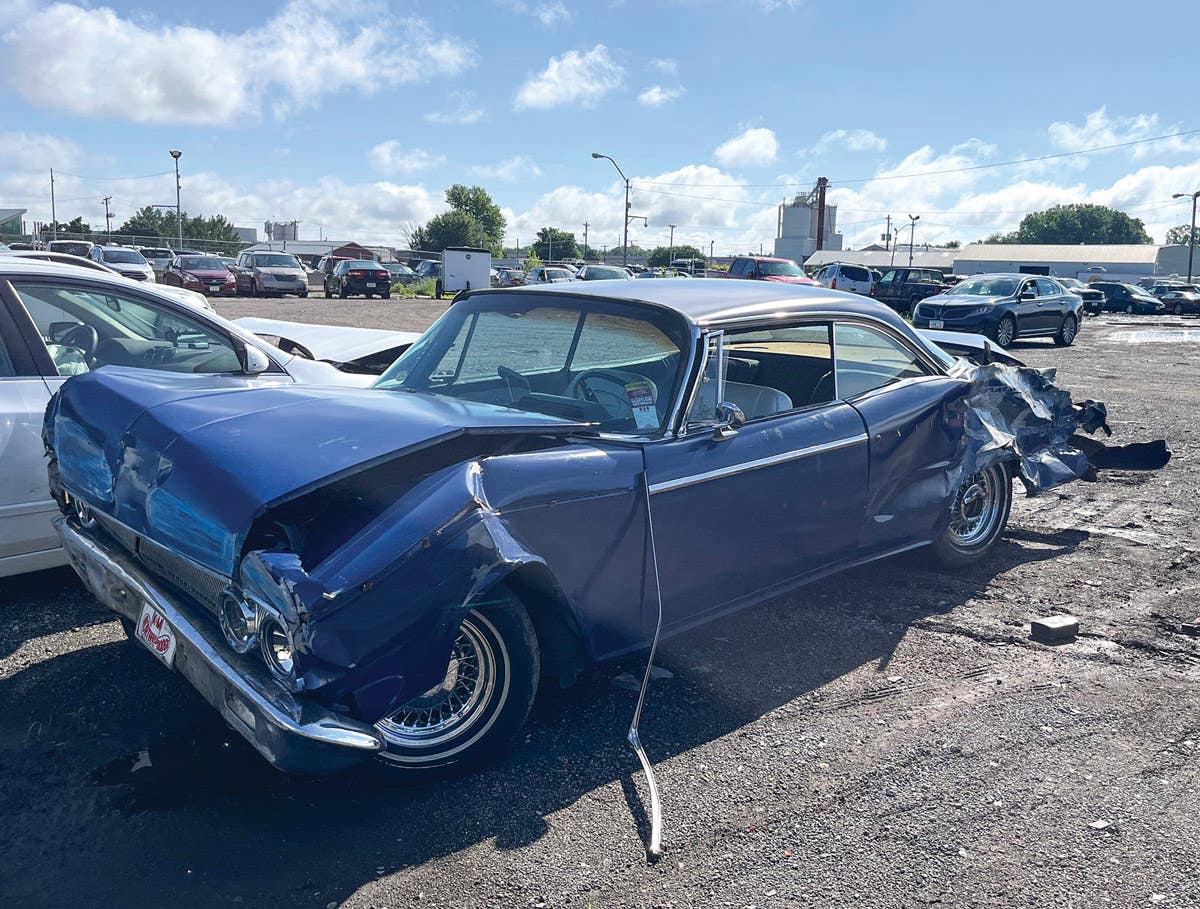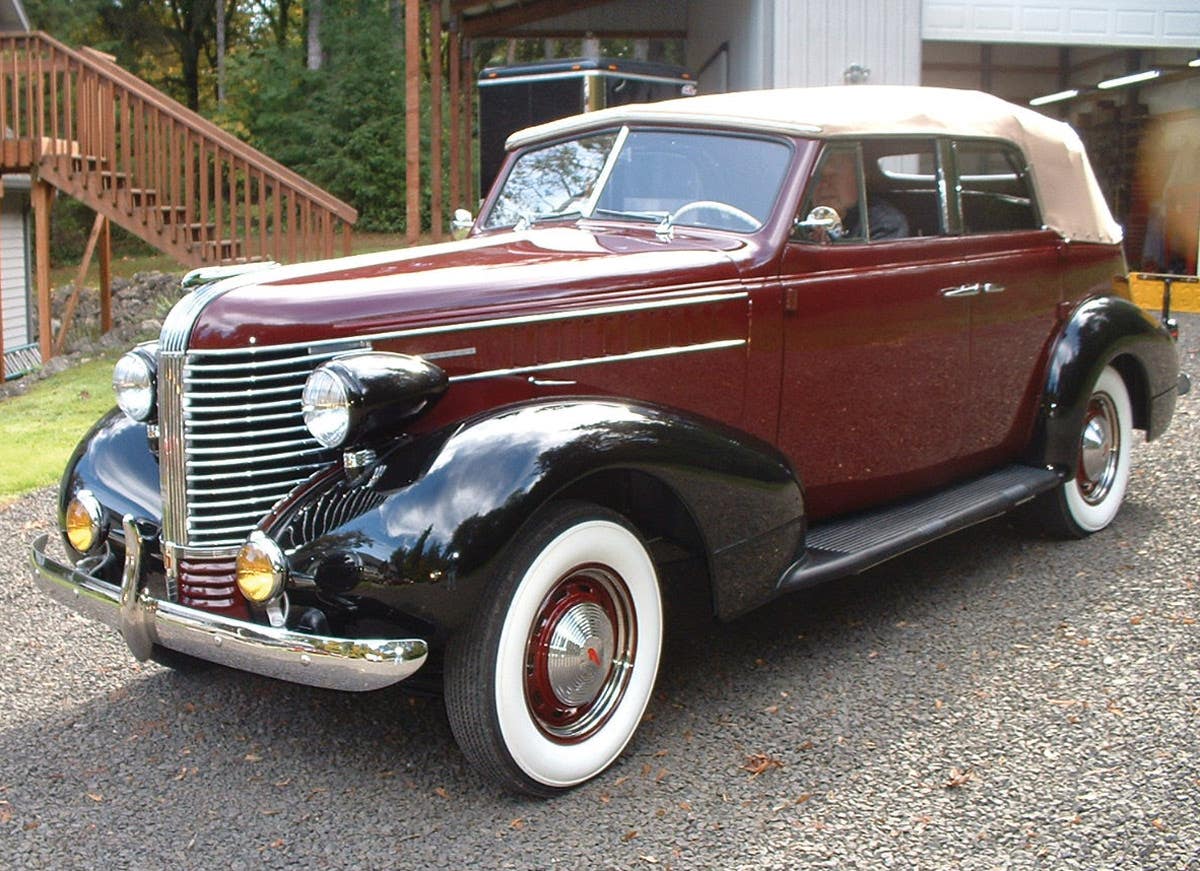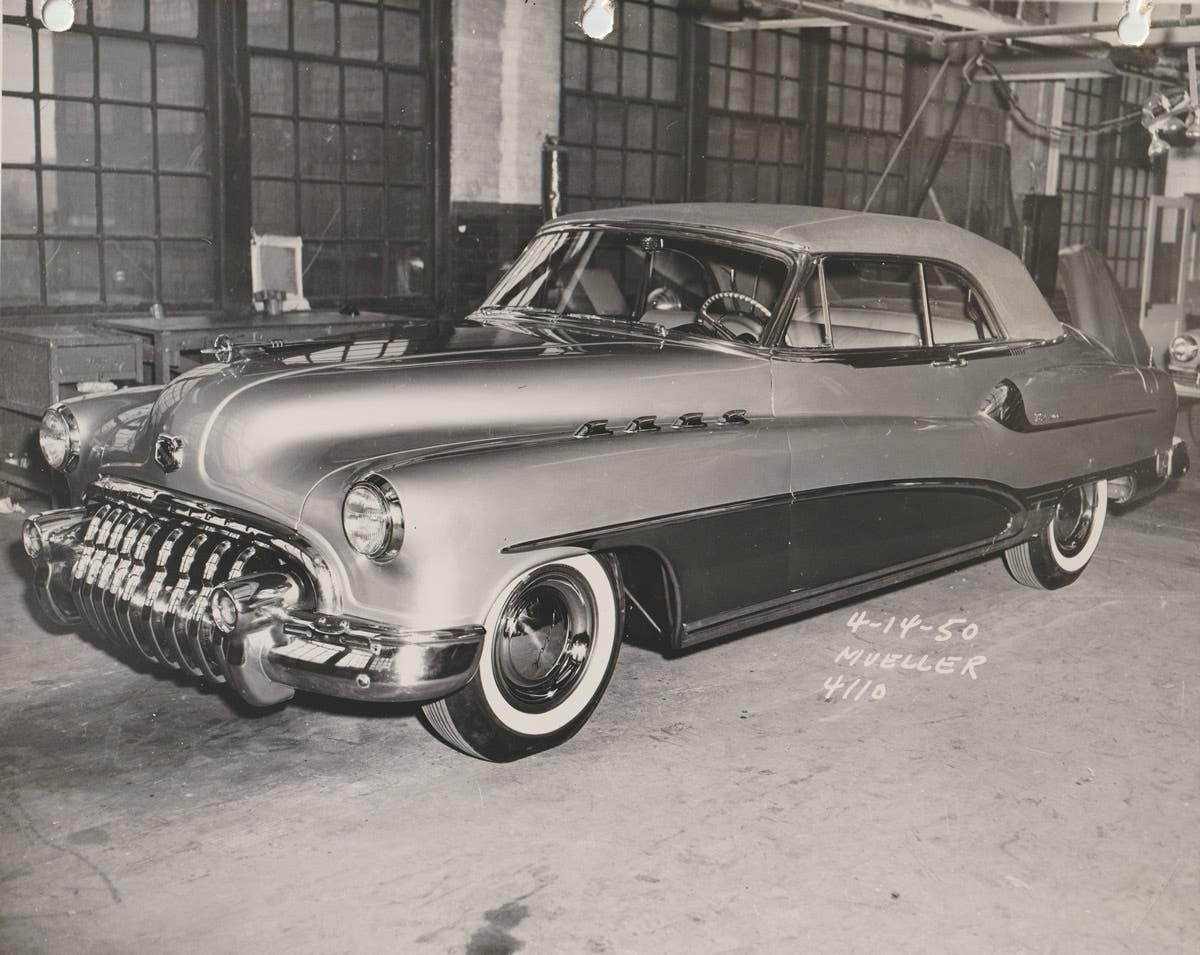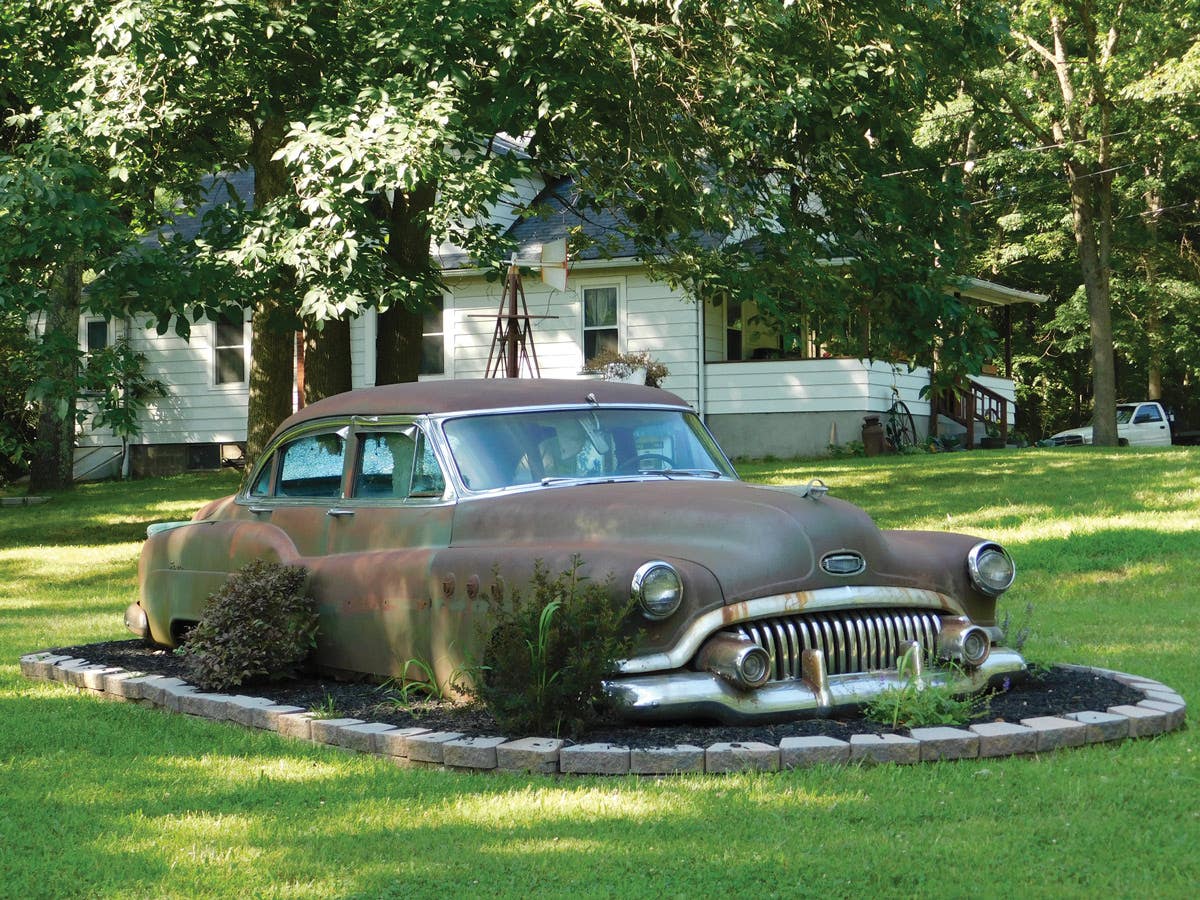Collecting Chryslers by John Lee
There’s nothing like being in the right place at the right time. Just ask Bob Wagner.
He’ll tell of the day in 1973 when he was driving through a town in Wisconsin and spotted a good-looking antique sedan parked at the curb. He didn’t recognize it immediately, but knew it was too large and fancy to be a common Ford or Chevy. It was definitely worth driving around the block to get a better look.
It turned out to be a 1932 Chrysler, and by its length and appointments — such as dual sidemount spares and a trunk on the rear — it couldn’t be a Six, it had to be an Eight. Closer inspection showed “Chrysler Eight” written on all six chromed hubcaps (four on the wheels on the ground and two on those in the sidemount fender wells).
For being 40 years old, the car was in remarkably good condition and didn’t appear to have been restored. The dark blue body and black fenders and beltline sash had not been repainted, and most of the original white pinstriping was likewise intact.
Everything about the car was so symmetrical: there were dual chrome horns protruding below the bold, chromed headlamp buckets; dual rearview mirrors on the side-mount covers; dual cowl lamps and air vents in front of the new-for-’32 split windshield; and dual round tail lamps at the end of chrome stalks attached to the rear fenders.
Closer inspection inside revealed that the car had some additional options that were rare in 1932, but would become much more common years later. Take the heater. The name on it was Ha-Dees, probably meant to imply that it would make the interior hotter than, uh, usual. A small electric fan attached in the upper left corner of the ceiling served the dual role of defrosting the windshield in winter and cooling the driver in summer. Incidentally, both halves of the windshield opened for more ventilation.
Seemingly far ahead of its time, the radio had one knob to switch from “city” to “country” to “streetcar,” the latter to cut down interference from electric trolley lines, and another to adjust for music, voice or “mellow.” The Motorola unit, a 1935 model that the previous owner installed, had six sliding buttons set to tune in the most wanted stations.
Though a radio was a rare option, Wagner said Chrysler wired an antenna into the roof of all its cars.
The new 1932 Series CP Chryslers were built on a new “double drop” frame on which the side rails curved downward slightly between the front and rear axles, setting the body lower than previous models. That design and a switch from 18- to 17-inch wheels gave the cars a slightly lower profile. The wheelbase span was 125 inches.
The Chrysler Eight engine displaced 298.6 cubic inches and produced 100 hp at 3,400 rpm. The cars came with a four-speed transmission, which apparently was problematic. Most, like this one, were recalled by the dealer the following year and replaced with a new Chrysler-built three-speed. This car was equipped with the optional automatic clutch that operated off engine vacuum; it still works beautifully.
So does the device attached to the thermostat housing, which opens and closes the grille louvers to regulate the coolant temperature.
While wood spoke wheels were standard, wires were increasingly in style, so it’s safe to say most of the eights had them. All Chryslers had four-wheel hydraulic brakes in 1932.
Having stopped to check out the car that day in Wisconsin, Wagner met the gentleman who had parked the Chrysler at his curb. “He told me the Chrysler had belonged to his best friend, who had died some months before,” Wagner related. “He got it out and ‘exercised’ it every few weeks. This just happened to be the day!
“I left my name and phone number,” he continued. “A few months later, I got a call telling me that no one in the family was interested in the car, so it was for sale.”
Wagner bought it and has maintained it in its original condition since. “Only the tires and battery are not original,” he said. It’s the oldest of the 11 vehicles, mostly Chrysler products, the he and Bob Lasher maintain, drive and enjoy in the San Diego environs where they live.
------------------------------------------------------
Potter trunks were hot items
Potter Manufacturing Co. was the successor of a couple earlier manufacturing businesses that dated from 1881. The original Jackson, Mich., plant made manilla-paper products, then switched to war materiel during World War I.
At war’s end, the company ventured into the auto industry, assembling and trimming the passenger compartments of Fisher Body Co. and General Motors products.
With the industry producing more enclosed cars, and owners traveling farther and more frequently, the Jackson firm carved out a new niche building steel trunks to carry luggage.
In 1923, Clark Z. Potter took over, changed the company’s name to Potter Manufacturing Co. and served as president during the 1920s and early ’30s.
The firm made trunks for many auto manufacturers. Output of 100 trunks a day increased to more than 10,000 a month during the firm’s heyday around 1927, when more than 100 workers were employed.
With the onset of the Depression in the early 1930s, coupled with more auto designs with built-in trunks, the Potter plant closed in 1937.
------------------------------------------------------
Chrysler fans should check out the Standard Catalog of Chrysler 1914-2000 by John Gunnell. It's loaded with history PLUS updated price guide values!







